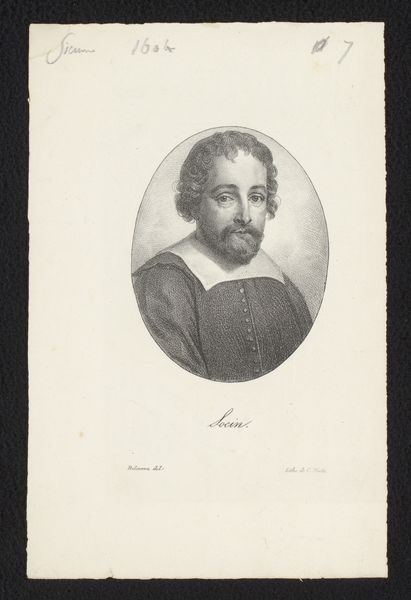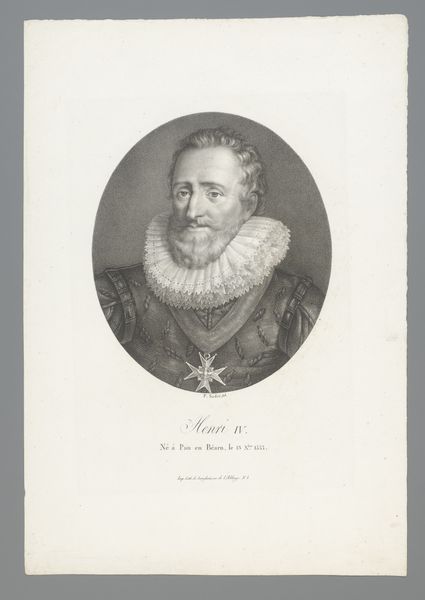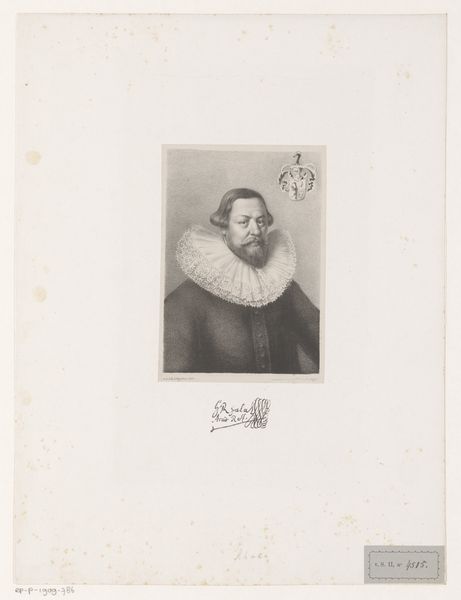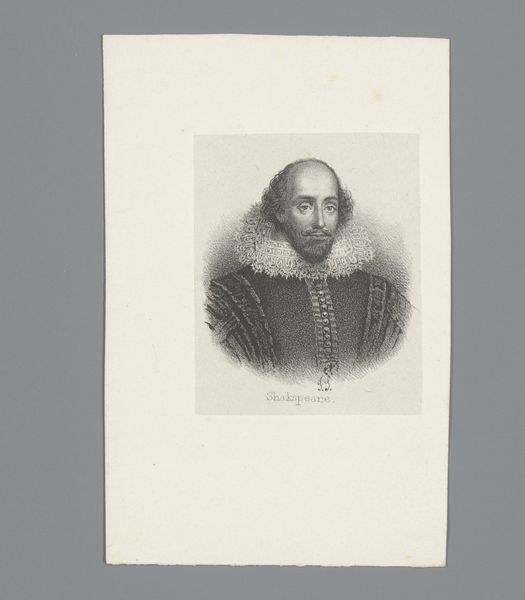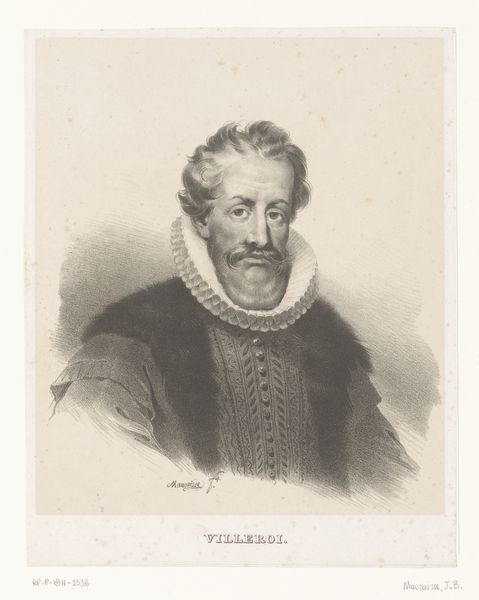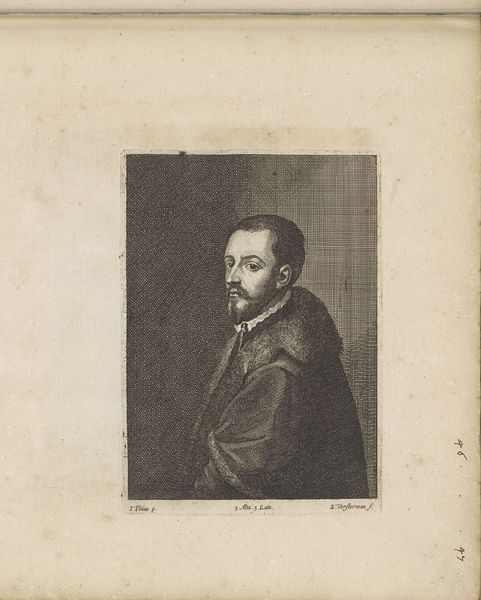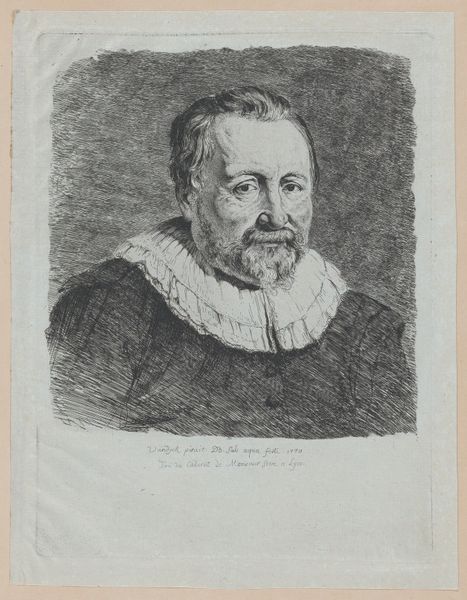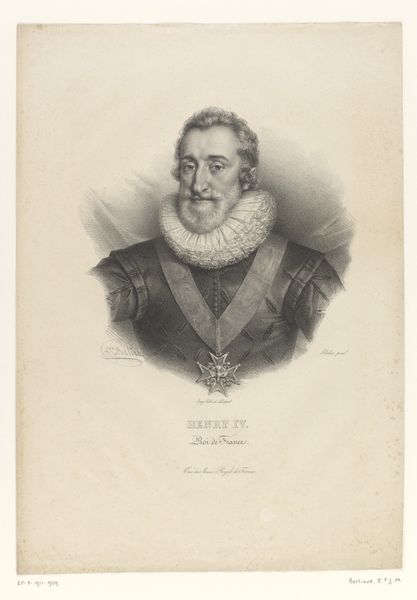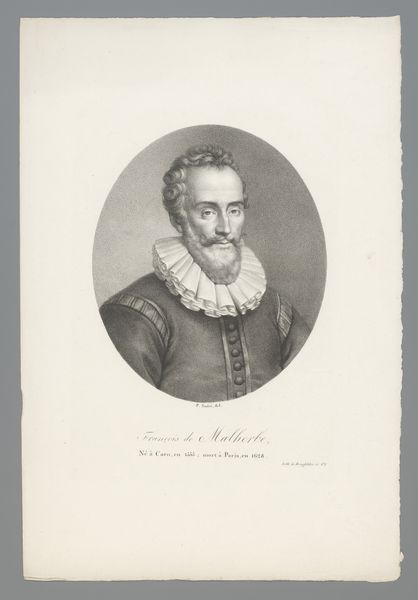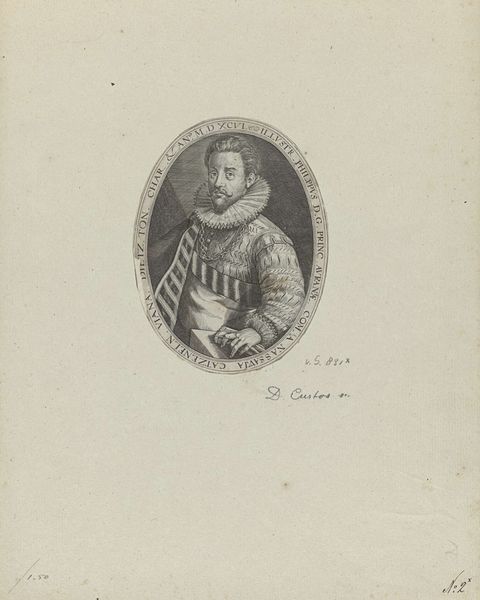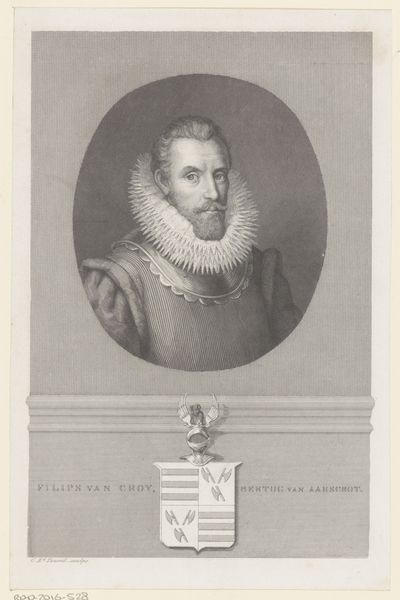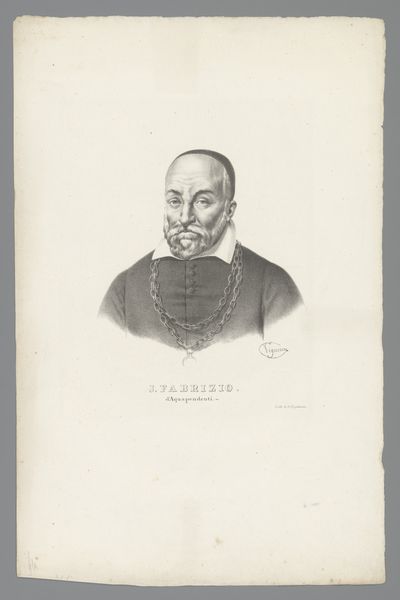
drawing, print
#
portrait
#
pencil drawn
#
drawing
# print
#
pencil sketch
#
figuration
#
realism
Dimensions: height 235 mm, width 148 mm
Copyright: Rijks Museum: Open Domain
Editor: This print, "Portret van theoloog Bernardino Ochino," was created sometime between 1817 and 1837 by Ludwig Rullmann. It seems like a rather formal and serious depiction of its subject. What historical context is important for understanding this piece? Curator: This portrait offers us a window into the historical reception of Bernardino Ochino, a significant, though controversial, figure of the Reformation. The fact that Rullmann, working centuries after Ochino's life, chose him as a subject is telling. How do you think the creation and dissemination of this image contribute to shaping public perception of religious figures? Editor: I guess it's like myth-making, right? Choosing to depict someone, especially in a formal way like this, gives them importance and a certain kind of authority. It seems to put them in the historical record in a particular light, even centuries later. Curator: Precisely! Prints like these were crucial in circulating imagery and shaping public memory in the 19th century. Consider the political implications. Was Rullmann's choice a commentary on religious authority in his own time? How might it have been received differently by Protestant versus Catholic audiences? Editor: That's a great point. I hadn't thought about the different viewpoints. So, by commissioning or purchasing such a print, people were actively participating in shaping their own understanding and promoting a specific viewpoint of history? Curator: Exactly. This work encourages us to consider the political life of images – how art engages with the dynamics of power, belief, and cultural memory. How does this portrait contribute to either bolstering or questioning traditional religious narratives? Editor: I never really considered a simple portrait could hold so much historical and political weight! It makes you think about the choices involved in image-making and their broader impact. Curator: Indeed. Reflecting on the intended audience and the socio-political environment in which it was made helps to illuminate how images can be tools of cultural influence.
Comments
No comments
Be the first to comment and join the conversation on the ultimate creative platform.
